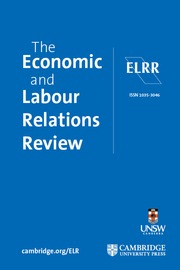Article contents
Collective and individual resistance: Exploring worker-driven factors limiting platform labour agency
Published online by Cambridge University Press: 03 June 2025
Abstract
The proliferation of platform-mediated work necessitates a nuanced examination of how workers negotiate their agency and contest power dynamics within these novel labour arrangements. This research seeks to examine the diverse resistance practices among platform workers and the worker-driven determinants that either facilitate or hinder such practices among workers. The research design uses a Global North-Global South dichotomous perspective to understand how workers engaged in analogous labour processes within disparate political-economic frameworks are responding to the challenges. In this, 122 semi-structured interviews were conducted among online food delivery workers in India [Mumbai and Guwahati] and Italy [Milan and Bologna]. The findings contribute to our appreciation of how individual determinants among workers impede resistance practices, ultimately diminishing the potential for unified collective action within the platform workforce.
Keywords
Information
- Type
- Original Article
- Information
- Copyright
- © The Author(s), 2025. Published by Cambridge University Press on behalf of The University of New South Wales
References
- 1
- Cited by

